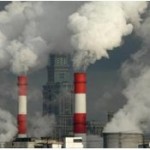
Dr. Ravinder Kumar Chaujar is working as a scientist in the Wadia Institute of Himalayan Geology, Dehradun, India. He is presently engaged in glaciological studies in the Dokriani and Chorabari (Kedarnath) glaciers in the Garhwal Himalaya. He has already done similar studies in the Chota Shigri Glacier (Himachal Pradesh) and Gangotri Glacier (Uttarakhand).
Glaciers and small ice caps in temperate environments are sensitive indicators of the change in climate. Mountain glaciers provide a valuable tool for reconstruction of Holocene climate changes. The present work, thus, deals mainly with climatic change and its impact on the Himalayan glaciers based on the dating of lichens, developed on loops of moraines formed due to various stages of advance and retreat of the glacier. Here it has been shown that the date of the largest lichen on the loop of moraine that indicates the position of maximum advance of the glacier is 258 years. It shows the period when the Chorabari glacier started receding from the point of its maximum advancement in this part of the Himalaya. Earlier work in the Dokriani Bamak (glacier) has shown that the period of retreat in the respective part of the Himalaya is around 314 years. Research on various glaciers of the northern and southern hemisphere has shown that most of them started their retreat in the mid-eighteenth century, thereby indicating the end of the Little Ice Age maximum. These results suggest that climatic changes in the world started during early to mid-eighteenth century, though this needs further work for confirmation. There is every possibility that its effect was sensed first in the zone close to the equator by the north-facing Himalayan glaciers such as the Dokriani Bamak.
It is now a well-established fact that the glaciers are receding by and large worldwide. Warmer climate in the future may cause increased melting of glaciers, which will lead to a rise in sea level. Change in climatic trends is clearly reflected in mass and temperature changes of glaciers and permafrost. The present study deals mainly with climatic change and its impact on the Himalayan glaciers based on the study of landforms by the Chorabari glacier in the Kedarnath temple area, Garhwal Himalaya, and dating of various cycles of its advance and retreat by lichenometry. The area is located (Figure 1) between latitude 30°44’50”N and 30°45’30”N, and longitude 79°1’16”E and 79°5’20”E. The basin area of the glacier is about 38 km2, whereas the area covered by the glacier is 15 km2. It is also fed by several hanging glaciers. The length of the glacier is about 6 km.

Chorabari is a valley glacier which has two snouts, one in its left margin and other in the right margin (Figure 2). The right snout, which is presently the main supplier of water to the Mandakini River, is situated at an altitude of 3865 m asl and the left snout is at an altitude of 3835 m asl. In other words, the origin of the Mandakini is mainly from the right snout of the glacier. Melt-out water from the left snout also feeds the water of the Mandakini and merges with the main channel, which is about 100 m northwest of the Kedarnath temple. It appears that this is part of a single glacier that has been divided into two and separated by its medial moraine before receding to the present position (Figure 2). Originally, there was only one glacier when it was in its advancing stage. Receding in due course of time has melted the glacier to such an extent that it could not disturb its own medial moraine and has been divided into two parts; thus, forming the two Chorabari snouts. The left snout is in a stage of thinning faster than the right one.

In the active zone, the main medial moraine now plays a major role in the glacier activities. It acts as the left lateral moraine of the main glacier and right lateral moraine of the tributary glacier, though the tributary glacier has a common accumulation zone as that of the main glacier (Figure 2). This suggests that the glacier has undergone vast amount of receding due to which its own medial moraine has separated its tributary glacier from the main glacier. There was a re-advancement of the glacier before the final stage of retreat, which was indicated by the presence of a new lateral moraine (the present one) near the snout, within the earlier lateral moraine. This advancement was smaller in size compared to the earlier glacier before retreat.












